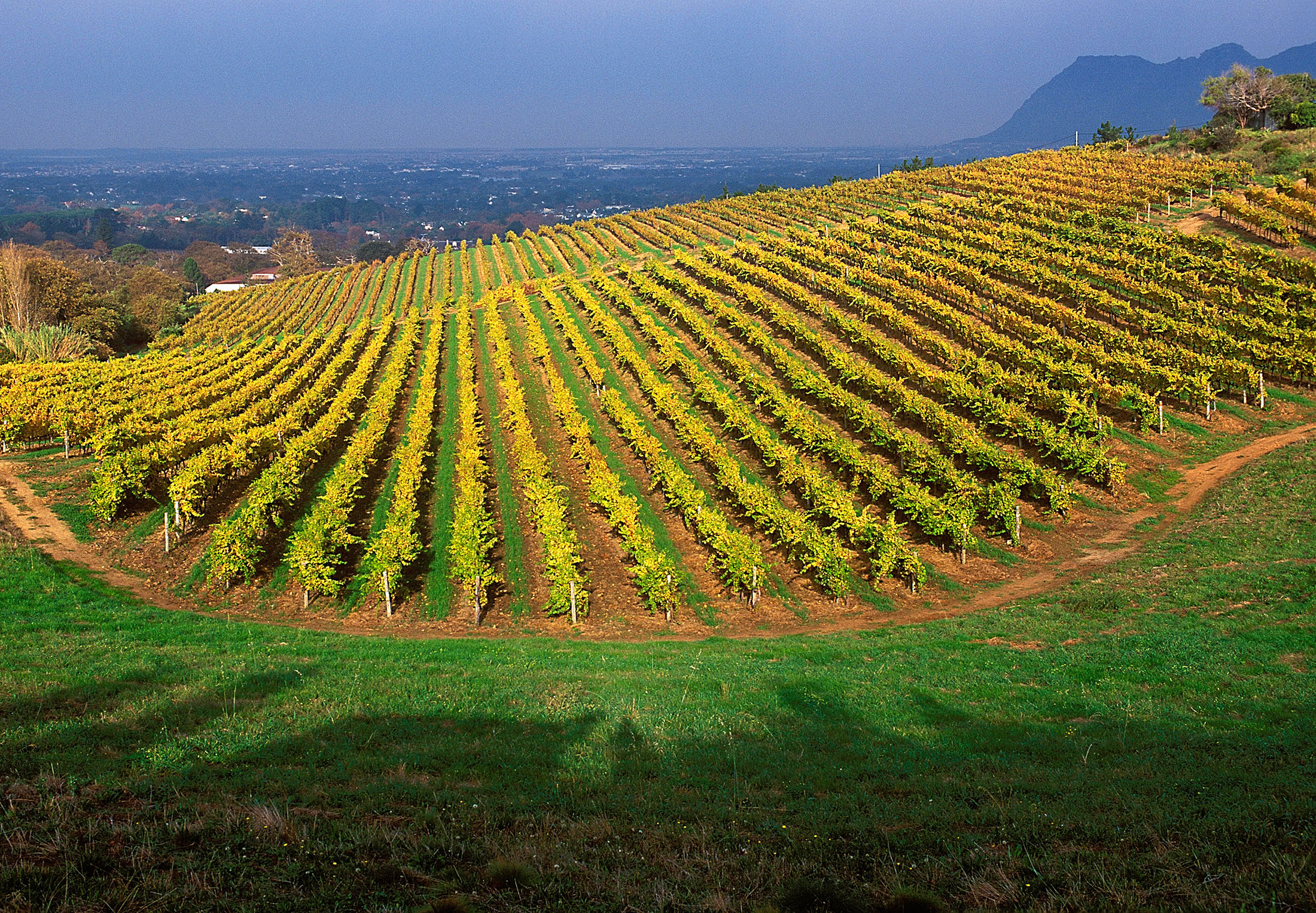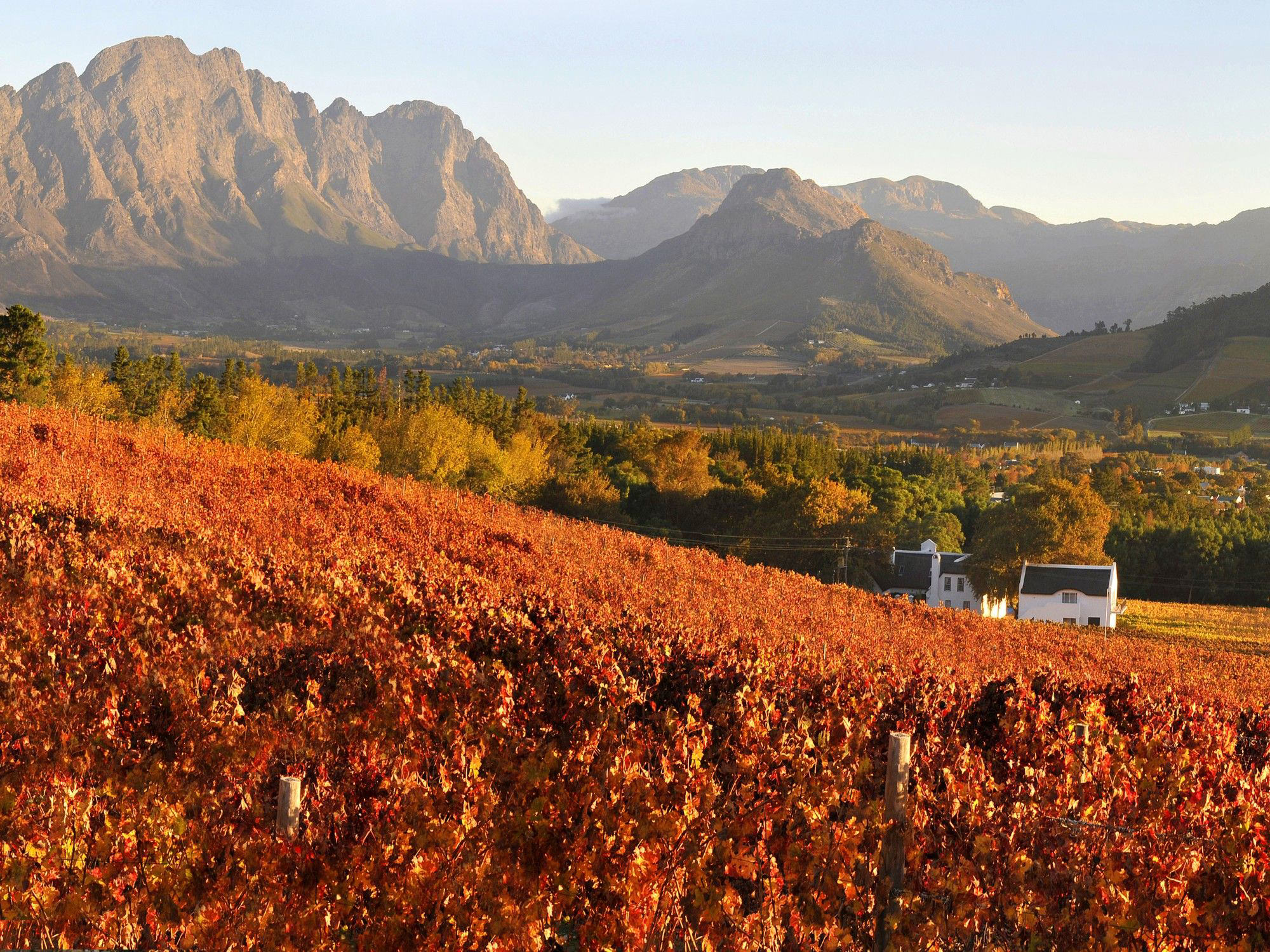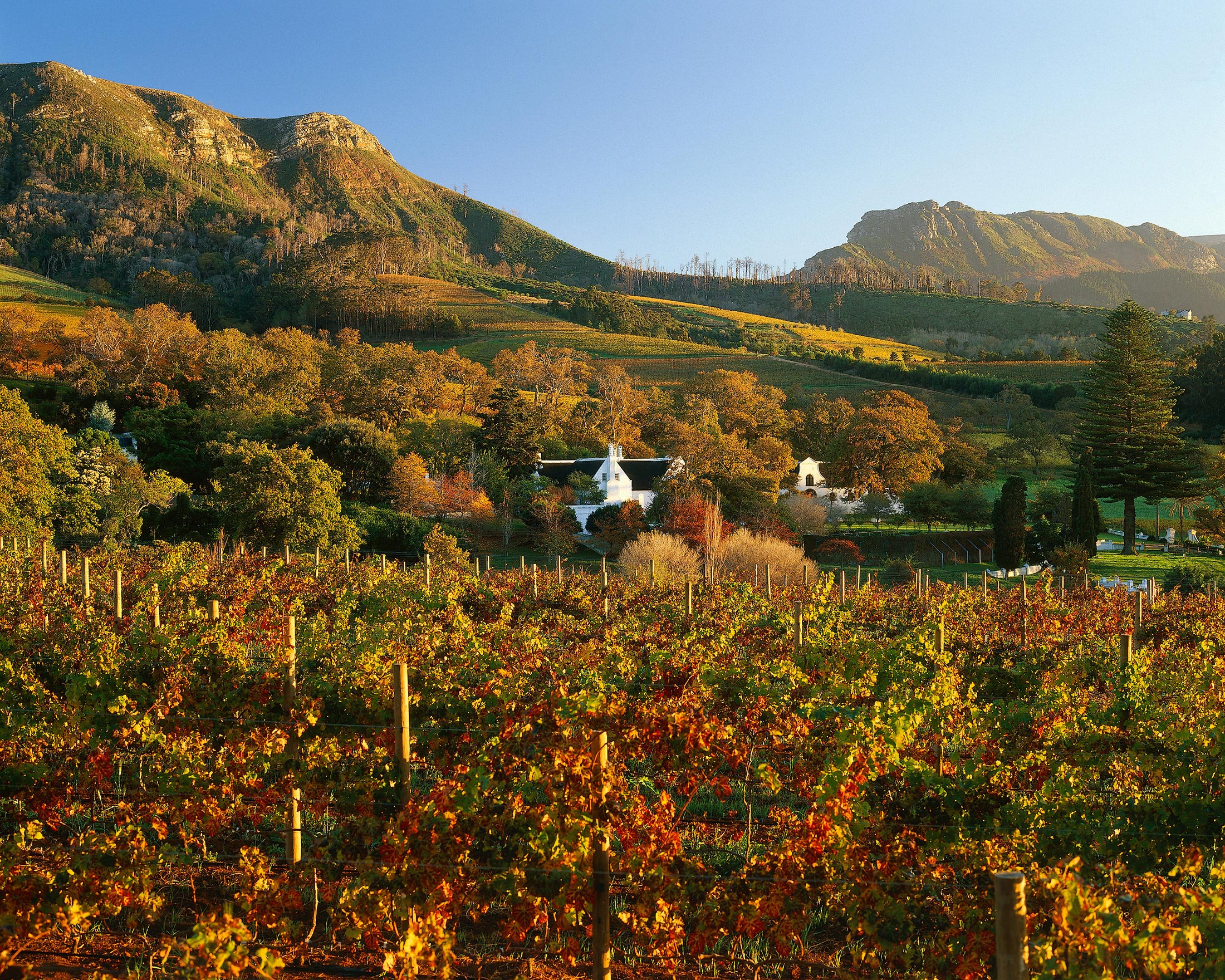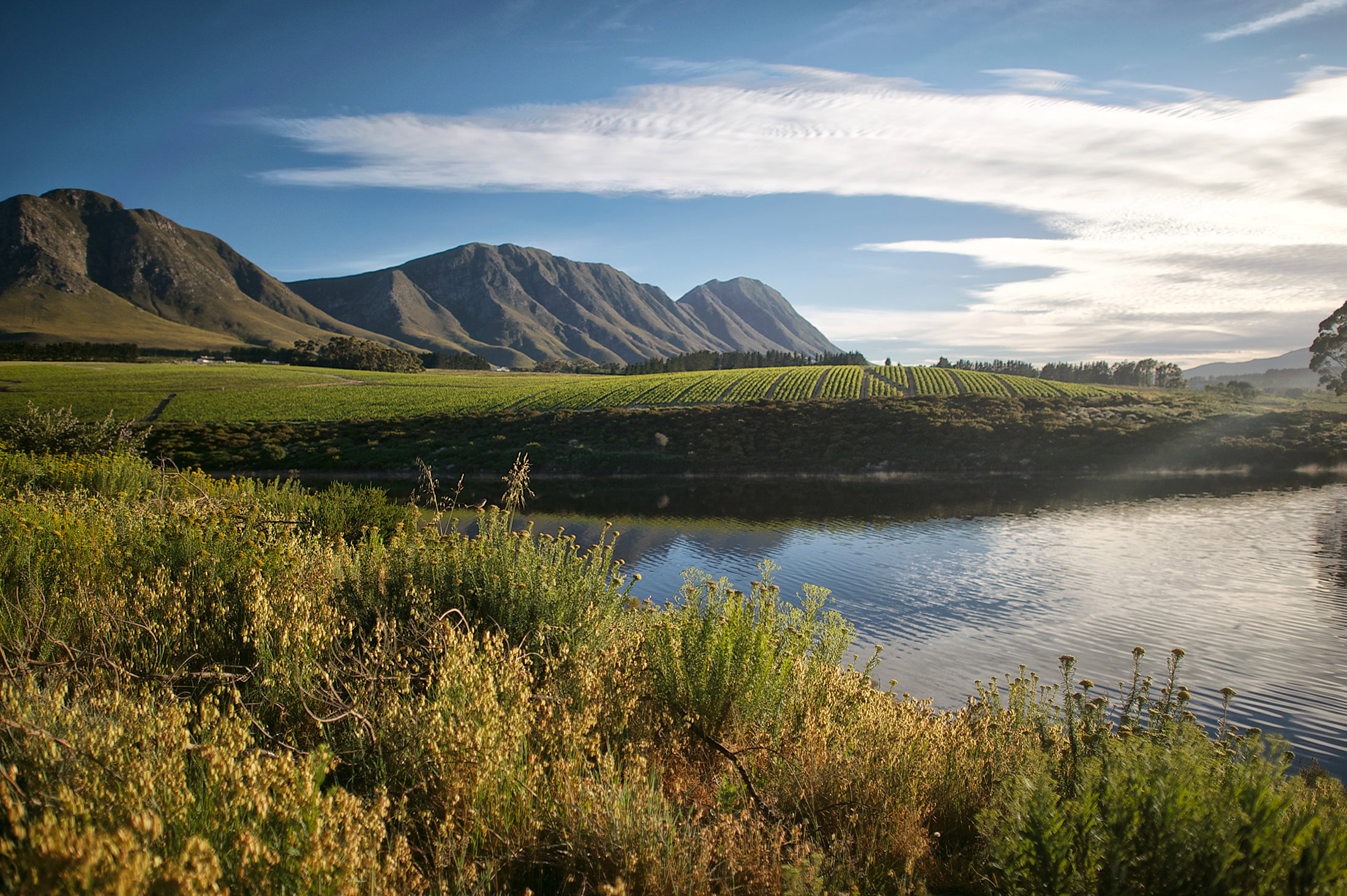Carved by the ages, South Africa seems as old as time—a captivating landscape jutting sharply into the colliding path of two mighty oceans. Its geography is sometimes gaunt and sometimes sanguine, contrasting our youthful West Coast landscape of verdant foliage and sharply chiselled mountains.
Grape vines have been found on South Africa’s ancient land for more than 350 years thanks to the Dutch East India Company, which used the Cape of Good Hope as a supply refuelling station on lengthy journeys between Europe and Asia; those who settled here planted vines. And tumultuous centuries later, a modern winemaking industry exists. While five regions and 27 districts make up the Cape winelands, most areas in the established Coastal Region are quick jaunts from the heart of vibrant Cape Town, making it easy for oenophiles to get their wine straight from the celebrated source.
The most familiar winemaking district in the country is anchored to its charming namesake town of Stellenbosch, which is roughly 40 minutes from Cape Town. Stellenbosch’s heart is a landscape of Cape-Dutch architecture; it’s also where the future of South African winemaking is nurtured at Stellenbosch University. And not far from town is one of South Africa’s oldest estates. Spier Wine Farm is a vast historical compound, a veritable self-sustaining village; the farm was founded in 1692, and construction on the wine cellar and ensuing 21 gables began in the mid-1700s. Fast-forward to the 20th century, and the first wine bottled with a Spier label was released in 1971.
Affordable and accessible, the Spier Signature Range offers a fresh and zesty chenin blanc (South Africa’s flagship white variety) and a fruit-forward merlot. But for complexity, the top range of Bordeaux-style blends called Frans K. Smit (named for Spier’s cellar master) are the most memorable. A white of sémillon and sauvignon blanc is tropical and citrusy, with engaging elderflower notes and a creamy, elaborate palate.
Next, about 35 minutes from Stellenbosch sits Franschhoek. Dubbed the culinary capital of the province, it is revelled in by gourmands. Franschhoek rests inland; mountains on three sides of this picturesque valley protect its vines, making it possible to grow a range of varieties, from fresh chardonnays and sauvignon blancs to full-bodied cabernet sauvignons and shirazes. Within Franschhoek, Boschendal is a vast farm that has been producing wine for more than 300 years. Founded in 1685 by French Huguenot Jon le Long, this impressive estate still thrives—visitors flock to stay in its luxury cottages, dine in its restaurants, and taste its wines.
Boschendal makes several tiers of wines, but the Méthode Cap Classique Grande Cuvee Brut is outstanding: citrus peel, toasted nuts, and bread dough aromas lead to an energetic and precise palate. Equally applaudable are the Elgin appellation series wines; an expressive and vibrant pinot noir doles out sweet raspberry, mocha, and vanilla aromas, while the chardonnay is elegant and restrained, with creamy weight.
Finally, closer to home base, a verdurous Cape Town suburb called Constantia rolls out from the southern slopes of Table Mountain. It is the birthplace of winemaking on the Cape, and is historically renowned for its sweet offerings. Cooled by ocean winds, this rainy slice of the Cape is best suited to white varieties, especially sauvignon blanc, chardonnay, and sémillon.
Roughly 12 producers form the Constantia Wine Route, one of them being the iconic Klein Constantia. Deeply rooted in this special place, Klein Constantia was established in 1685 by the Cape’s second governor, Simon van der Stel (he also settled Stellenbosch). Among the lineup of lively whites are a chardonnay, a riesling, several sauvignon blancs, and a delicious traditionally-made sparkling chardonnay. However, it’s the iconic Vin de Constance that best tells the story of Constantia. Made of muscat de Frontignan, it is an unctuous dessert wine that glides across the palate with apricot jam, salted caramel, and honey flavours. “We have 500-million-year-old soils of decomposed granite here,” says winemaker Matthew Day.
“The granite definitely comes out in the wine—you get an umami and savoury character.” Reflecting the nuances of its land and the optimism of its people, South African wines could truly only be made here, and here is the best place to have them.
Read more on food and wine.














